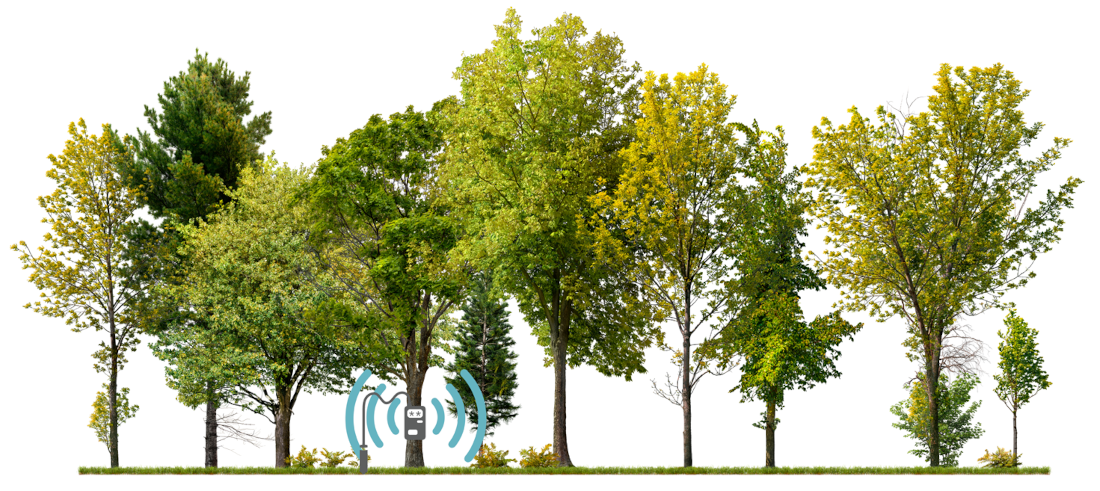Introducing HMI Tree Rhythm Research Site
Have you ever wished you could hear your trees speak? Yes, the ones in your yard. Well, that may not be possible just yet,
but the scientists at the HeartMath Institute developed a new technology that reads the electrical signals in trees and the
surrounding earth, and then feeds those signals to the cloud where they are processed and displayed on your computer screen.
We have more than a dozen trees on our beta site right now, and are actively seeking more beta users.
HeartMath Institute has been building technologies to sense coherence levels in humans for over two decades and has installed
a Global Coherence Monitoring System that continuously measures the resonant frequencies in the Earth’s magnetic fields.
As a non-profit research institute, based in northern California, we are uniquely qualified to create sensor technology for trees.
Our tree rhythm research is part of our broader initiative in relation to interconnectivity, an emerging hypothesis that all life
forms are interconnected in a rich tapestry of intersecting magnetic energy fields. We aim to reveal this ancient hypothesis under
the lens of modern science.

What does the research tell us?
New research suggests that Earth’s magnetic fields carry biologically relevant information that connects all living systems
and helps to synchronize, energize and support the interconnection of all these systems. In the past couple of years,
our scientists have become especially interested in the role trees play in this discovery.
Science is only scratching the surface of the many benefits to come from the next level of conscious awareness of our
interconnectivity with others, nature, animals and trees. This is why we initiated the Interconnectivity Tree Research Project.
This project involves the gathering and analysis of data from trees all around the world upon which sensors have been and will be installed.
You can view the current data by clicking here or by clicking on the "Live Data" link above. You can also participate in this project
by obtaining a tree monitoring system and placing it on your favorite tree! Click this link to see if you qualify.
a global citizen-scientist project
Why is it important?
Scientists know that trees generate electrical current. The first that we know of to conduct long-term measures of trees’ electrical activity
was Harald Saxton Burr who was a professor at Yale University. We have found that trees generate a voltage of up to 200 millivolts
when electrodes are placed in its trunk. At the HeartMath Institute, we’re looking at trees as generators of biofields that might interact
with human or even planetary scale biofields. This research might help us prove that Nature is one interactive “soup” of energy fields.

Our current trees' live data
In cooperation with people just like you, HeartMath Institute scientists are examining the ways in which all living things are interconnected.
They are accomplishing this by researching biofield interactions and the exchange of information between our personal and global magnetic field
environments.
We present live data gathered by individuals who have placed sensors on one or more of their favorite trees. To learn more
about how you can get involved with this project, click here.
sample graph of live tree data

How can I participate?
For those who would like to be part of this exciting citizen-science project, you can apply to get a tree sensor.
There are some specific requirements (e.g., the size of the tree trunk needs to be at least 6 inches in diameter),
and there are some costs associated with the tree sensor hardware and software system. To learn more about the qualifications
to join the project, click here.
You can also make a tax-deductible donation to the HeartMath Institute, earmarked for the tree rhythm project.
If you’d like to make a donation to help this project grow, please
click here.
Simply sign up to keep informed about our project. We’ll keep you updated regarding our progress as we add new trees around the world,
collect larger stores of data, and begin to recognize patterns that inform our understanding. To sign up and stay informed about the project,
click here.

